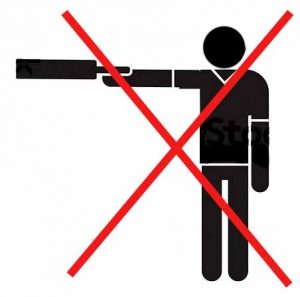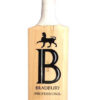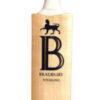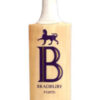There are many many charts and even more theories on matching the bat size to height, age, type of player etc etc. When presented with too much information, or not enough, younger players that have Google to advise, or an old fashioned coach may be lead down the wrong path. Furthermore, a shop assistant that is often under instruction to sell a particular item for one reason, or many, may not have the best interest or knowledge to do what is right for the best choice of bat.
In the world of virtual shopping, it is near on impossible to make a choice of what is right. Too often the use of a professional cricketer is used to sell a model. Unfortunately the model does rarely represent what is actually used at the highest level, and if it were to come close, the buyer has rarely gone through the elite training that enables the bat to be used as seen.
Price is also a very shaky means of assessing performance and quality as it is not based on material costs alone. Some brands may have a large chunk of marketing to cover due to player endorsements etc., marketing the brand on top of buying the bats readymade or part made from a manufacturer contributes a large part of business expenditure.
To be able to test performance, a ball or mallet needs to bounce off the playing surface. The weight of a bat seems straight forward at first glance, but some stores display a weight that does not include labels & grip, which can add over 3oz.
Appearance of attractive grain and clean willow does not always lend a direct path to high performance. As a maker, I can say without any hesitation, the quality of willow has declined massively over the past 15 years so bats at the top end in appearance are becoming so very rare. Often companies that only have access to low grade willow will bleach the willow to make it look a higher grade. Some companies have resorted to covering the grade of willow by using facings that are a photograph of a well grained piece of willow, deceptive action to say the least (Look for edge tape that runs the full length of the bat). Big edges do not equate to better rebound (despite new MCC laws) and labels themselves very rarely give an indication to a bat’s true makers identity. Makers identity is important to assess a known standards of craftsmanship (reputation is a valuable asset) and gives knowledge as to the techniques used in making. Each maker does produce a certain type of bat.
In a perfect world you get to feel the pick up and handle shape and test the rebound and weight of a bat before you buy. Advice given void of an ulterior motive to sell beyond what is best for the player and know the person, or persons responsible for crafting is scarce. This did exist until the 1950’s as sports shops did not sell bats until post WWII. Bats were only available from the maker. Then TV commercialised the labelling of bats as the space became a billboard for brand recognition. Furthermore, professional players began to attract payments as the commercial interests grew.
With on-line sales being a major outlet now, the chance to feel and inspect is very limited whilst the chance of receiving not what was asked for increases. Bradbury are looking to introduce a mobile showroom to metro areas that are not near our workshop. We will trial this in Sydney first with a hope to expand should this prove successful. Look for updates on social media soon.
On a final note, it is an old wives tale that you choose a bat only if you can stand holding it with one hand, outstretched, for some random time period. Whilst this may prove certain muscle strength and mental fortitude, it does not determine weight suitability. Imagine if you tested 10 bats this way, in secession… the last few never have a chance! If you do not bat like this, do not test the feel of a bat like this.






Recent Comments